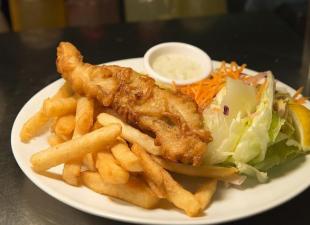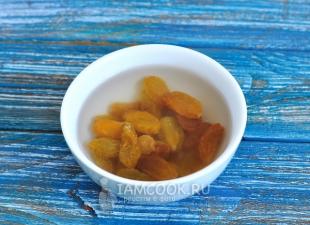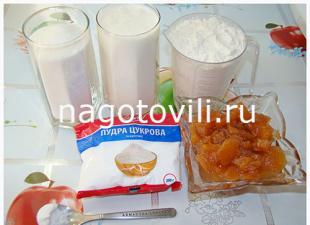Dough is a real stumbling block for many housewives. You may be an ideal cook, but the task of baking, for example, pies from your own yeast dough, is still insoluble for you: the dough is either too dense, sometimes too sticky, or does not want to rise. Although there are thousands of recipes for making dough of any kind in the world, and this matter, in general, does not represent any complexity. Let's try to figure it out and find out how to make the perfect dough.
What is dough
A dough is called an intermediate product used in bakery, confectionery, pasta production, as well as when baking flour products at home. The dough is made from flour with the addition of components such as water, yeast, sugar, salt, eggs, butter, spices, etc. The dough contains proteins, fats, carbohydrates, salts, acids and other substances. When kneading the dough, these substances can be in it in various states of aggregation: in the form of a suspension, colloids, solutions, etc.
The most important ingredient in the dough is flour... Usually it is wheat flour. It is advisable to take premium flour for baking, without foreign smells, not infected with bug larvae. Before kneading the dough, the flour must be sieved: it will be enriched with oxygen, and, moreover, it will be additionally cleaned of random debris. It is better to take flour for baking with a low gluten content, but strudel, bread or puff pastry are better obtained from flour of the so-called durum wheat.
In the process of kneading the dough, add sugar, which is necessary to improve the taste of future baked goods, as well as to stimulate the vital activity of yeast cells. Sugar must be put carefully, strictly in accordance with the recipe, otherwise, if there is an excess of it, the dough will become heavy and too dense.
Depending on the recipe, different types of dough can be added to the dough. dairy: milk as such, kefir, sour cream, cottage cheese, etc. Dairy products create lactic acid fermentation and contribute to better loosening of the dough.
For plasticity, the dough is introduced and fats- vegetable oil and animal fats. If you do not overdo it, the pastries will turn out to be tender, fragrant and will not stale for a long time. However, excess fat will limit the protein's ability to swell, and will inhibit the vital activity of yeast cells, so that the dough will not be loose, and the baked goods will turn out to be dry and tasteless.
Eggs we add to the dough should be fresh and not too large. They will give your baked goods crispness and tenderness, strengthen the crust of the product, improve its color and taste.
Yeast for the dough, you can take both pressed and dry. Before use, they are diluted either in warm water or in warm milk. Be careful that the liquid is not too hot, otherwise the yeast cells will die. Cold liquid slows down the activity of yeast cells, and the dough will rise more slowly.
To others baking powder dough include baking soda and ammonium carbonate. In stores, you can buy ready-made bags with a mixture called "Baking powder for dough". For 400 g of flour, 10 g of such a baking powder is usually taken. Some housewives use soda slaked with vinegar as a baking powder, but sometimes soda can spoil the taste of baked goods.
Lemon zest, salt, vanillin, cinnamon and spices can be added to the dough to improve the taste.
Test types

Dough for dumplings according to GOST recipe:
Wheat flour - 700 g, water 260 g, eggs - 1.5 pcs., Salt 15 g. Yield - 1 kg. Part of the flour is used to sprinkle the rolling pin and roll the dough.
Add water, salt and eggs warmed to 35 degrees to the flour, knead until smooth, and stand for 40 minutes to swell the gluten.
The dough for dumplings is prepared in the same way, only 25 g of sugar and 245 g of milk are added as ingredients.
Pancake dough without yeast: Beat well 3 eggs, half a teaspoon of salt and 3 tbsp. l. sugar, add vanillin or vanilla sugar for taste. Slightly dilute the resulting mixture with milk (in total we need 0.5 liters of milk) and add 6 tbsp. l. flour (with a slide and always sifting through a sieve). Add the remaining milk, stir the dough. When the dough is kneaded, you can pour boiling water into it and stir - the pancakes are lacy without any soda.
Yeast pancake dough: take 660 g of flour, 50 g of margarine, 1.1 l of milk, 40 g each of sugar and vegetable. butter, 2.5 eggs, 40 g of pressed yeast and 15 g of salt. Dissolve salt, sugar, yeast diluted in warm water in milk, heat the mixture to 40 ° C, then add eggs, flour, mix, add rast. butter and leave the dough for three to four hours in a warm place. The dough that has increased in volume is kneaded once.
For fritters dough it is prepared in almost the same way: 1.2 liters of milk, 1200 flour, 35 g of yeast, 43 g of sugar, 1.5 eggs, 22 g of salt. The dough should be thicker than the pancake dough.
Sponge (butter) yeast dough for pies and kulebyak: flour 641 g, sugar 34 g, table margarine 29 g, salt 10 g, press. yeast 19 g, water 258 g.
Pour water at a temperature of 40 ° C (70% of the total required quantity) into a container, add yeast diluted in water, 60% flour. Stir all this, cover the container with a lid or a clean towel, and leave in a warm place for fermentation. Scientifically, this is called dough. After about three hours, when this same dough doubles in volume, add the rest of the liquid, flour, and knead the dough. Put margarine there. Leave the dough to rise for two and a half hours, during which it must be kneaded 2-3 times.

Puff pastry, which seems to many to be the pinnacle of culinary excellence, can be easily prepared at home to surprise everyone with a luxurious Napoleon cake. To do this, you need a pack of margarine, two glasses of flour, salt and some water. Margarine is simply placed in a bowl of flour and chopped with a knife. During this action, the margarine particles are covered with flour, and to knead the dough, it will simply be necessary to add 0.5 cups of water to the container. The finished dough is put into the refrigerator for half an hour or an hour, and then thinly rolled out and baked whatever your heart desires: cake cakes, puff pastries, tongues, etc.
Shortcrust pastry breaks all records for the simplicity of preparation. It was with him that millions of homemade baking lovers probably began their journey. Indeed, to mix three eggs, 200 grams of melted butter, a glass of sugar, salt and 2.5-3 glasses of flour, no special skills or phenomenal memory are needed. The resulting dense, buttery dough produces luxurious curly cookies, shortbread pies with jam or cheese, and delicate homemade cakes.
Of course, there are many more types of dough, and each chef has his own secrets of making it. So, in search of our ideal test, we will have to experiment. But, in the end, everything will definitely work out!
 karaoke-k3.ru Pancakes, pancakes, buns, muffins, dumplings, pies, cookies, cakes, khachapuri.
karaoke-k3.ru Pancakes, pancakes, buns, muffins, dumplings, pies, cookies, cakes, khachapuri.


